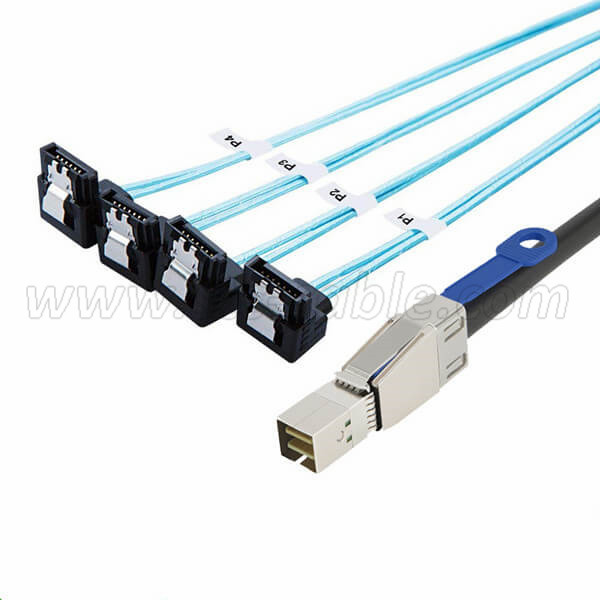What is the difference between Mini SAS and SATA?
Mini-SAS and SATA (Serial ATA) are both interfaces used for connecting storage devices to computers and servers, but they serve different purposes and have distinct characteristics. Here’s a detailed comparison of the two:
1. Protocol and Performance
1> Mini-SAS (Serial Attached SCSI):
Protocol: Mini-SAS is an extension of the SCSI protocol and operates using the Serial Attached SCSI (SAS) protocol.
Performance: Mini-SAS supports higher data transfer rates compared to SATA. For instance, SAS-2 supports up to 6 Gbps per channel, SAS-3 supports up to 12 Gbps, and newer SAS-4 supports up to 22.5 Gbps per channel.
Data Channels: Mini-SAS cables can handle multiple data channels simultaneously (e.g., a Mini-SAS cable with four lanes can support connections to four drives).
2> SATA (Serial ATA):
Protocol: SATA is a standard protocol used primarily for connecting individual storage devices such as hard drives and SSDs.
Performance: SATA interfaces have lower data transfer rates compared to SAS. For instance, SATA III (the latest common version) supports up to 6 Gbps, and SATA Express (a newer but less common version) supports up to 16 Gbps.
Data Channels: SATA interfaces typically support a single data channel per connection, which means each drive operates independently.
2. Use Cases and Applications
1> Mini-SAS:
Enterprise Storage: Mini-SAS is used in high-performance and enterprise storage environments. It is commonly found in servers, storage arrays, and data centers where multiple drives are connected to RAID controllers or backplanes.
High Density: Designed to connect multiple drives through a single cable, which simplifies cabling and enhances data throughput.
Backward Compatibility: SAS controllers are generally backward compatible with SATA drives, though the reverse is not true.
2> SATA:
Consumer and Desktop Storage: SATA is widely used in consumer and desktop applications. It is common in personal computers, laptops, and low-to-mid-range servers.
Single Drive Connections: Typically used for connecting individual hard drives or SSDs to the motherboard or storage controller.
Less Expensive: Generally less expensive than SAS and often sufficient for standard consumer applications.
3. Connectors and Cables
1> Mini-SAS:
Connectors: Mini-SAS connectors are typically 36-pin and come in both internal (e.g., SFF-8087) and external (e.g., SFF-8088) configurations. The newer Mini-SAS HD (High-Density) connectors (e.g., SFF-8643 and SFF-8644) offer improved performance and density.
Cables: Mini-SAS cables can support multiple data channels and are used to connect multiple drives or storage enclosures to controllers.
2> SATA:
Connectors: SATA connectors are typically 7-pin for data and 15-pin for power. They are used to connect individual drives to the motherboard or power supply.
Cables: SATA cables are simpler, typically having a single data channel per cable, which connects each drive separately.
4. Features and Capabilities
1> Mini-SAS:
Advanced Features: Supports features such as high availability, scalability, and advanced RAID configurations. Often includes support for features like daisy chaining and direct-attached storage.
Reliability: Generally offers better reliability and performance for high-demand applications due to its high-speed data transfer capabilities.
2> SATA:
Basic Features: Suitable for standard consumer storage needs. While it supports essential features such as hot swapping and Native Command Queuing (NCQ), it does not have the advanced capabilities of SAS.
Ease of Use: Simpler to implement and configure for basic desktop and consumer storage setups.
Summary
Mini-SAS and SATA serve different needs in the storage hierarchy:
1> Mini-SAS is designed for high-performance, high-capacity environments like enterprise servers and storage arrays, offering higher data transfer rates and the ability to connect multiple devices through a single cable.
2> SATA is designed for individual, consumer-level storage devices, providing a cost-effective solution for connecting hard drives and SSDs in personal computers and desktops.
Understanding these differences helps in choosing the appropriate interface for your storage needs based on performance, application requirements, and budget.
Send your message to us:
Post time: Jul-23-2024
